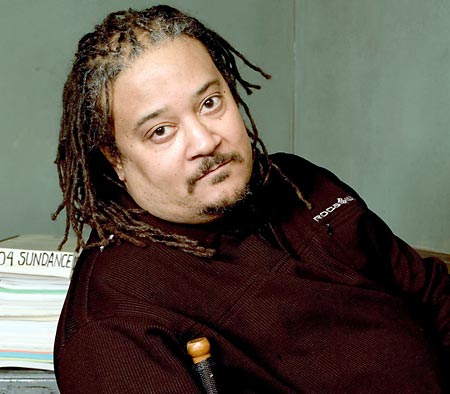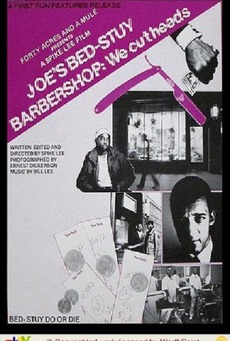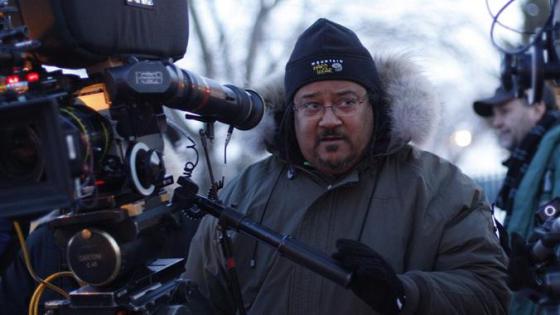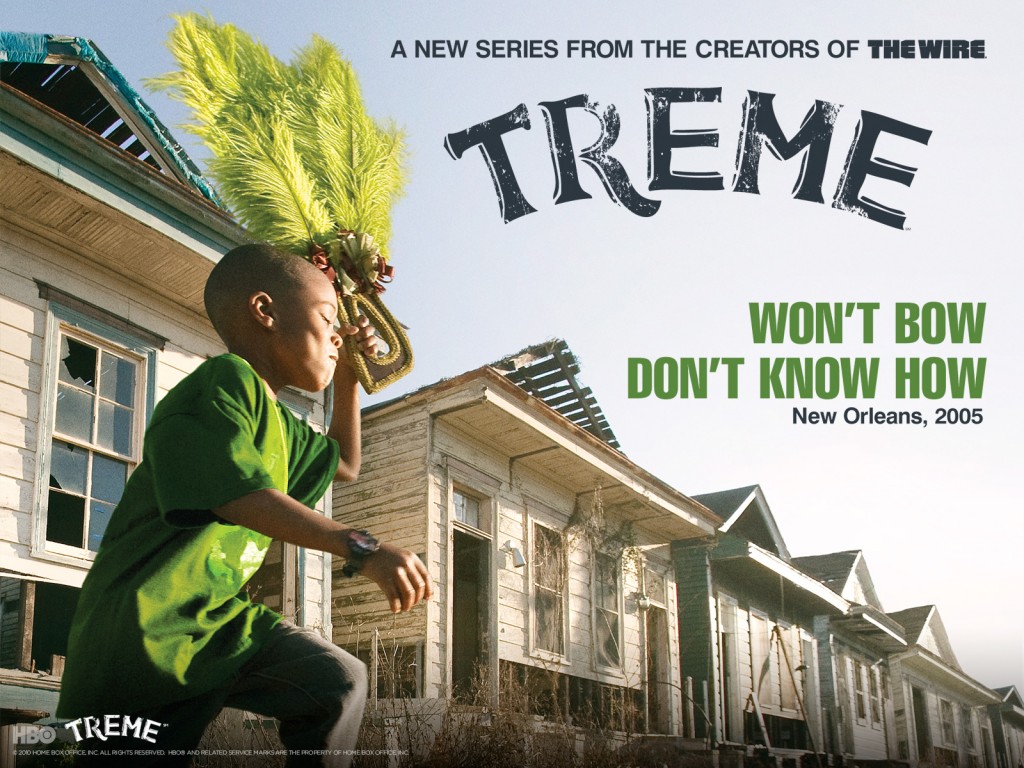
Good Morning POU!
Today’s featured award-winning Cinematographer is the renowned Ernest Dickerson.
The success and signature appeal of Spike Lee’s early films have Ernest Dickerson’s cinematography to thank as much as Spike’s own cinematic flourishes. Dickerson’s eye helped make a Spike Lee joint, a Spike Lee joint.
Dickerson was born in Newark, New Jersey. He studied architecture at Howard University but also took a film class with Haile Gerima as he already was interested in movies. He later relocated to New York to attend New York University’s film program at the Tisch School of the Arts, where he would meet fellow student Spike Lee. His first feature film as Director of Photography was also Lee’s first film, Joe’s Bed-Stuy Barbershop: We Cut Heads (1983), filmed while both of them were still students.
After graduating, Dickerson began his career as cinematographer on music videos for Bruce Springsteen, Anita Baker and Miles Davis, and went on to film John Sayles’ Brother from Another Planet (1984), his first professional film as a Director of Photography (DP).
While working on the first two seasons of George Romero’s television series Tales from the Darkside, Dickerson was a cameraman on John Jopson’s concert film One Night with Blue Note (1985) and was later contacted by Spike Lee, who had found the budget to shoot his classic movie She’s Gotta Have It (1986).
He always intended to become a director in his own right, as there is a natural progression from Cinematography to Directing. Consider that he’d written the screenplay for Juice, what would become his directorial debut in 1992, some 8 years prior, before he’d begun to cement his reputation as a talented DP, who went on to shoot a number of films that aren’t just black cinema classics, but cinema classics: John Sayles’ The Brother From Another Planet, Krush Groove, and of course his collaborations with Spike Lee, including the seminal 1989 incendiary drama Do The Right Thing.
It was the same year (1992) that his last director/DP collaboration with Lee (Malcolm X) was released, that Dickerson saw his directorial debut, 8 years in the making (the hip-hop film noir, Juice), also open in theaters – a film that, while not what would qualify as a blockbuster hit, did well enough (relative to budget) and went on to achieve cult appeal.
And it was then that Dickerson’s career as a director was launched.
The American Society of Cinematographers profiled Ernest and he shared how his interest began in photography and also his influences:
What sparked your interest in photography?
When I was young, I always wondered why some movies looked the way they did. That there was a photographic process involved never occurred to me, because I didn’t know what photography was. When I was about 14, my uncle, El Hajj Daoud Haroon, became artist in residence at Wesleyan University. He’s a jazz musician, but while there, he took photography classes. He used to produce some of the most beautiful black-and-white prints. That was the first spark. But later, when I was about 16, that same uncle and I were watching one of those movies whose look tantalized me: David Lean’s Oliver Twist, shot by Guy Green, BSC. My uncle casually mentioned how beautiful he thought the photography was. That’s when it clicked that I was watching something that had been photographed. Around that same time, I saw In Cold Blood. I was stunned by the look of it and saw that it was photographed by someone named Conrad Hall. Not long after that, I read a New York Times article on Conrad and his work on Electra Glide in Blue. I became fascinated by the idea of directors of photography and what they did.
Where did you train and/or study?
I did my undergraduate work at Howard University, with a major in architecture and a minor in color photographic illustration. Then I took a master’s in filmmaking at New York University, majoring in cinematography. Between those two experiences, I worked as a medical photographer at Howard University Medical School for three years.
Who were your early teachers or mentors?
I guess my chief mentor was my uncle. He also helped me buy my first still camera and taught me how to use it. Also, professors Haile Gerima and Roland Mitchell, who taught film and cinematography at Howard University, encouraged my first serious thoughts about becoming a filmmaker.
What are some of your key artistic influences?
Orson Welles, Alfred Hitchcock, Akira Kurosawa, Miles Davis, John Coltrane, Jimi Hendrix, Gordon Parks, Robert Frank, W. Eugene Smith, Ernst Haas and Peter Turner.
How did you get your first break in the business?
After graduating from NYU, I was wondering how to get one. One day, out of the blue, I got a phone call from John Sayles’ producer. He was preparing a new film and had just seen my work in Spike Lee’s graduate thesis film, Joe’s Bed-Stuy Barbershop: We Cut Heads. John was looking for a cinematographer for his movie, which eventually became The Brother From Another Planet.
What has been your most satisfying moment on a project?
My most satisfying moment on any project is when I find out something I’ve done has really connected with an audience, and they respond.
Have you made any memorable blunders?
Yes, realizing several days into a project that it was a mistake to have taken it in the first place. It was painful to learn that I cared more about the film and took it more seriously than the producers did.
What’s the best professional advice you’ve ever received?
I’ve learned so much from reading American Cinematographer, and the best professional advice I ever received was from an interview with Gordon Willis. In it, he stressed the importance of always having a point of view when approaching a scene. It’s the first question I ask myself when I’m designing my coverage: what is the point of view, or whose? Once I’ve answered this question, everything falls into place with much more ease.
Following Juice, he’d go on to helm several projects, from Surviving The Game, to Futuresport, to Good Fences, and even horror films like Tales From The Crypt: Demon knight and Bones.
For television, Dickerson has directed several episodes of acclaimed shows such as Dexter, The Walking Dead and Treme. A long time horror movie fan, he has also worked on both Masters of Horror and Fear Itself and directed Demon Knight and Bones (2001).
Dickerson joined the crew of the HBO drama The Wire as a director for the series’ second season in 2003. He directed the episode “Bad Dreams“. Reviewers drew comparisons between Spike Lee’s films and The Wire even before Dickerson joined the crew. “Bad Dreams” was submitted to the American Film Institute for consideration in their TV programs of the year award and the show subsequently won the award. Following this success Dickerson returned as a director for the third season in 2004. He directed the episode “Hamsterdam” and the season finale “Mission Accomplished“. In 2006 he contributed a further two episodes to the show’s fourth season: “Misgivings” and the season finale “Final Grades“.
The fourth season received a second AFI Award and Dickerson attended the ceremony to collect the award. Showrunner David Simon said that Dickerson is the show’s directorial work horse and that he knows the show as well as the producers; Simon has praised Dickerson’s directing saying that he “delivers each time”.
Dickerson returned as a director for the series’ fifth and final season in 2008 and helmed the episode “Unconfirmed Reports“.
He would later work with David Simon again, directing several episodes of the New-Orleans based drama Treme, including the season 2 finale “Do Watcha Wanna”, which won Dickerson a NAACP Image Award for Outstanding Directing in a Dramatic Series.
In a recent interview with Shadow and Act, Ernest talked about future projects and his plans for retirement:
You’ve hinted at projects you’re sitting on that you’ve been wanting to make, but can’t get them off the ground because of financing. Can you share anything about what those projects are, or are they all a secret until you get the funds you need?
Yeah, there’s a project that I’m trying to get made that I’m attached to. It’s an adaptation of an Octavia Butler novel called Clay’s Ark. We have a really good script of it, but, at the moment we’re trying to get funding for it, which is always the struggle. Also I’ve written a screenplay which is an adaptation of an African Canadian author, Minister Faust, and we’re trying to figure out how to make that too.
You have directors like Soderbergh and Tarantino talking about retiring in 10 years or so; do you see yourself retiring at all, or will you work until you can’t work anymore?
No I pretty much figure that I’m probably going to die on set. I don’t want to retire. I want to keep working for as long as possible. Retire and do what? I just can’t see it. No, I figure I’ll probably die in the director’s chair. One day I’ll say cut, and suddenly just fall out of my chair and die or something.





